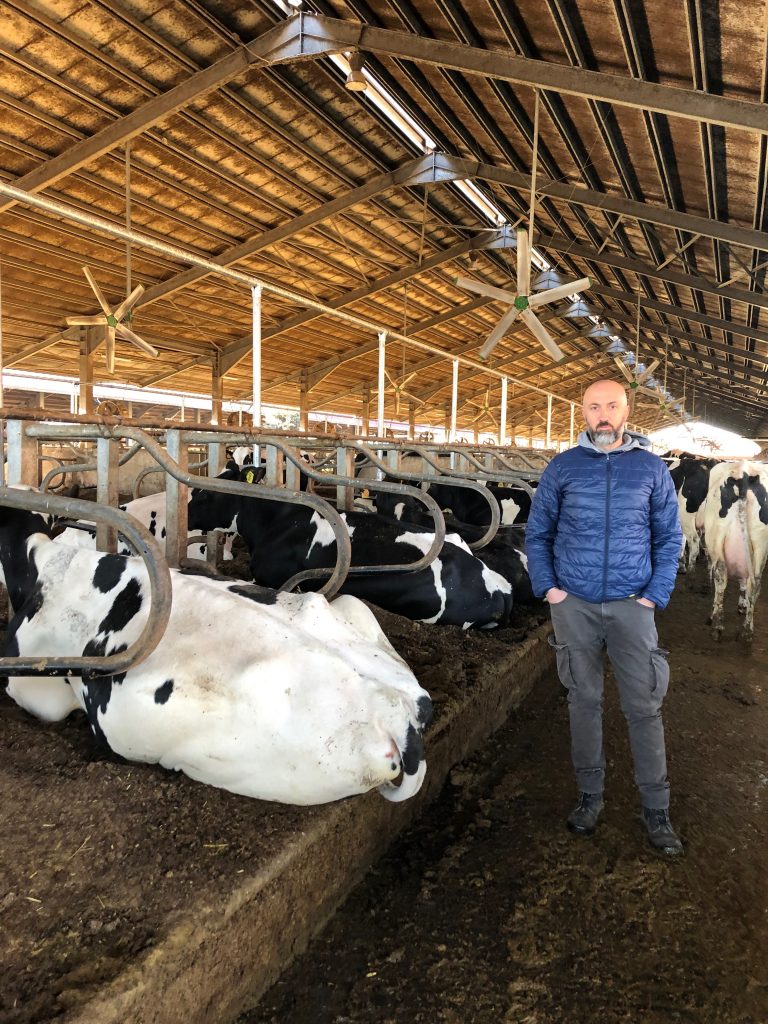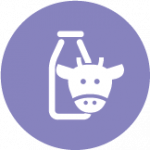PILOT 4.2 Consumer Awareness: Milk Quality and Animal Welfare Tracking Management

CHALLENGE
Many farmers already monitor their animals by using different smart devices which collect data in a scattered way. However, they often miss an overall vision of the most important animal welfare and milk yield indicators. In addition, processing companies are interested in data relating to the milk’s quality levels while consumers want more transparency regarding the food they eat. However, data is not exchanged between actors in the supply chain. The challenge is therefore to optimise the flow of this information.
AIM
The pilot aims to integrate the data collected from the breeding farm and from the processing company in order to optimise the flow of information between the actors within the milk value chain. By using open and standard-based technologies, it will allow actors of the milk value chain to get an overview of animal welfare and insights on the quality of milk, that is strictly connected to the health of the animal. The data collected will be acquired by a traceability system, to improve communication between actors right up to the consumer, increasing food liability and trust.
HOW
New wearable devices for animals will be installed and their data will be integrated with data coming from sensors already existing on the pilot farm in order to implement an information flow optimisation and optimise processes. Devices will be installed to allow automatic milk composition analysis and to guarantee the traceability of milk collected. Deployed solutions will adopt standards protocols and DEMETER data formats to enable interoperability.
BENEFIT
The implementation of standards-based and interoperable elements will enrich the overview of the animal welfare and milk yield indicators, easing the extension of the information flow to new data sources and optimising the availability of scattered data in a single access point. This will result in a higher quality of milk and a fairer price for producers. It will lead to greater transparency on milk production and animal health for farmers and processors. For consumers, it will deliver improved transparency on product nutritional values, origins and animal welfare.

LIVESTOCK
FOCUS: Animal Health, High Quality & Optimal Management of Animal Products.
LOCATION

Italy
PARTNERS





Pilot projects run under pilot cluster four:
Pilot 4.1 - Dairy Farmers’ Dashboard for the Entire Milk and Meat Production Value Chain
Dairy Farmers’ Dashboard for the Entire Milk and Meat Production Value Chain
Farmers have to handle an increasing number of digital systems and solutions that affect their daily work as well as production and investment decisions. Today’s digital solutions do not communicate or integrate well enough together and are not largely based on the needs of the farmer.
Pilot 4.2 - Consumer Awareness: Milk Quality and Animal Welfare Tracking Management
Consumer Awareness: Milk Quality and Animal Welfare Tracking Management
Many farmers already monitor their animals by using different smart devices which collect data in a scattered way. However, they often miss an overall vision of the most important animal welfare and milk yield indicators. In addition, processing companies…
Pilot 4.3 - Proactive Milk Quality Control
Proactive Milk Quality Control
Traditional farming involved management systems based on direct observation of animals and intuitive decision making by the farmer. Larger animal numbers and reduced available time of the farmer have necessitated changes, potentially resulting in less available time to observe and detect welfare and health issues of individual animals.
Pilot 4.4 - Optimal Chicken Farm Management
Optimal Chicken Farm Management
Growing food demand has increased the need for animal protein. This need currently exceeds the demand by 1.7% per year, resulting in global annual poultry production reaching over 103.5 million tons (Foreign Agricultural Service/USDA, Livestock and Poultry: World Markets and Trade). To meet growing demands…


